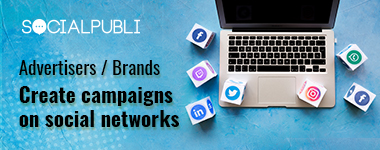Clickbait is considered to be false advertising and bad. But, what if we were to use it with care? What if we used it properly, like a true English gentleman would.
The purpose of clickbait is to attract attention and make people click. There is nothing wrong with describing content in an interesting way, in order to generate curiosity.
Clickbait has been around us for a long time, long before BuzzFeed became an expert in the matter. From newspapers of centuries past, to television series that end with a cliffhanger so you’ll tune in for the next chapter. And of course we can’t forget the classic ads which announced, “are you tired of losing money? Well, suffer no more! Because with the new…..”
Focusing on the Internet, titles for clickbait have a very bad reputation because they usually “trick” the users, promising content that is never like what they say. The key to good clickbait is to have the user enter and, importantly, find the content which they were expecting. That is to say, introduce the content in an expressive manner, but without deceiving people.
If you write, “You cannot imagine the incredible secret that I’ve never shared with anyone” , and then it turns out that once you peed in a swimming pool,… this is bad. Our emotions motivate us and to manipulate them with exaggerations doesn’t lead us anywhere. You will get visits but, if the user flees from your content, then this has not accomplished anything. Because they are not going to want to share your content.
This is also true with YouTube and images which are previewed. You have almost certainly had the experience of looking for a fragment of a TV show, you go in to see the image and, in the end, they only talk about the show. They have managed to get visits, but the short duration and the possibility of dislikes will end up hurting them.
What words to use in the title
The title is the first point of contact with your potential audience and it can be the only one if it doesn’t attract their attention. Therefore, you have to take great care and dedicate sufficient time in order to have a good title.
First, think about what your audience wants and what their feelings or interests are. Once this is clear, then let your creativity run free and think of 20 possible titles that can bring together those interests with the theme of your content. Once these are done, have someone you trust help you look at it from a different perspective and choose the best one.
The title has to add value and introduce what the article is about. Don’t be ambiguous, like “What this man did will amaze you”, or “I have bad news”. And don’t use gratuitous capital letters!
Another thing which is very important to keep in mind is that the title facilitates being found on Google and other search engines. That is to say, if you have made a compilation of GIFs of animals, it is better to call it “Look at these GIFs of animals”, rather than “Look at this list of GIFs”. Thus, your compilation will show up when the users are searching for “GIFs of animals”.
You have probably already realized this, but people love lists. They help organize information and it extends their potential lifespan. Another way to attract attention is to personalize the title, such as “I did it…”, or talk to the user directly, such as “When you read this..”. Questions are also a good resource to attract attention: “Did you know…”. And if you manage to insert (with relevance) current events, references to pop culture or animals, you can find yourself with a deluge of clicks.
As an example of the points above, it is not the same to use the title “ Overview of the history of the Mayas”, rather than “Do you know the 7 most important moments in Mayan civilization?”. So, now you know. You can bring your content to life thanks to clickbaits with class.












